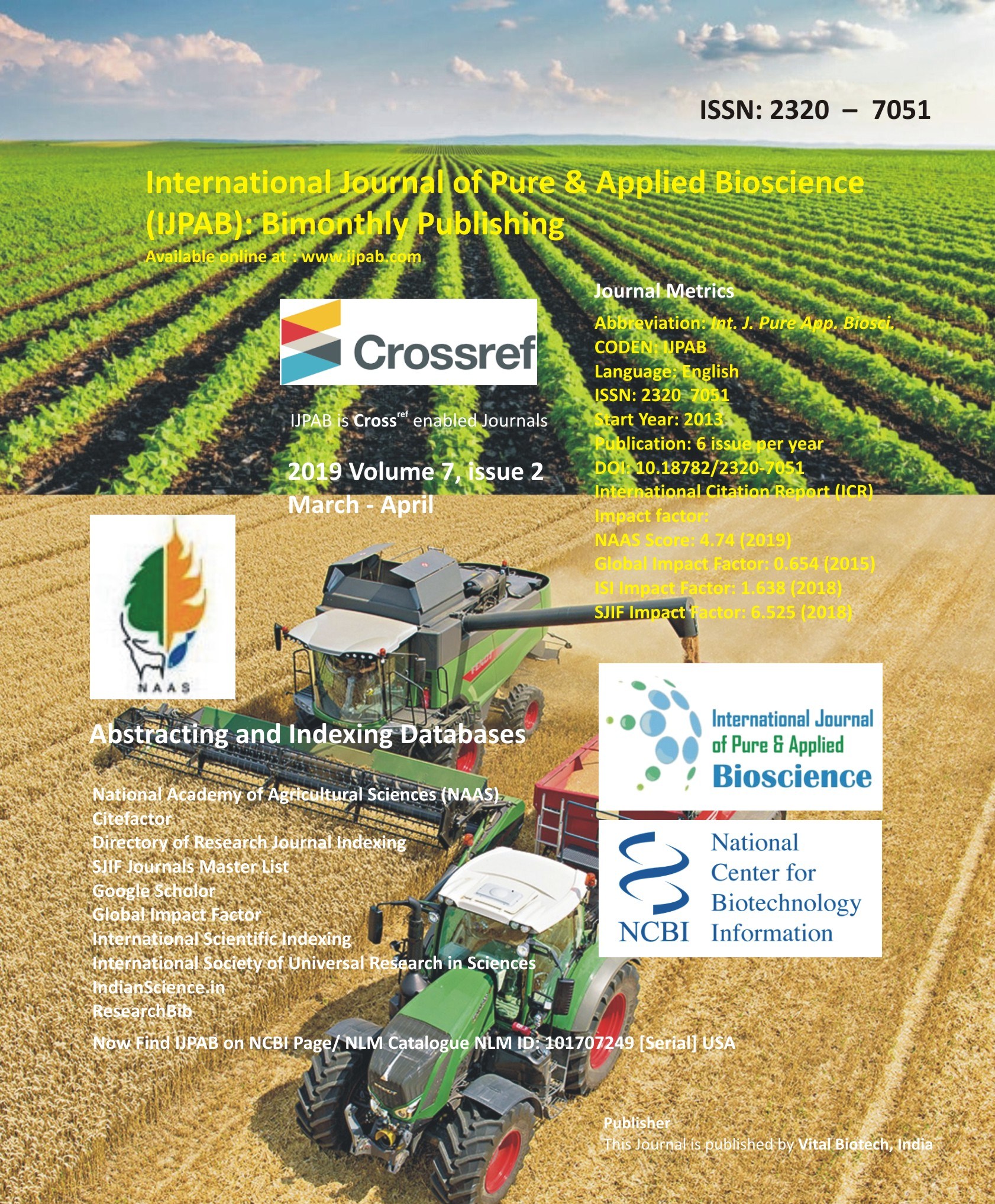
-
No. 772, Basant Vihar, Kota
Rajasthan-324009 India
-
Call Us On
+91 9784677044
-
Mail Us @
editor@ijpab.com
International Journal of Pure & Applied Bioscience (IJPAB)
Year : 2019, Volume : 7, Issue : 2
First page : (470) Last page : (481)
Article doi: : http://dx.doi.org/10.18782/2320-7051.7479
Socio-Economic and Biophysical Characteristics of Forest Fringe Communities of Sindh Forest Division in Kashmir Himalayas
Muneesa Banday1*, M. A. Islam1, P. A. Sofi1, A. A. Wani1, P. A. Khan1 and Showkat Maqbool2
1Faculty of Forestry, Sher-e-Kashmir University of Agricultural Sciences & Technology of Kashmir,
Benhama, Ganderbal (J&K)
2Faculty of Agriculture, SKUAST-K Wadoora Sopore, J&K
*Corresponding Author E-mail: 13forestry08@gmail.com
Received: 5.03.2019 | Revised: 8.04.2019 | Accepted: 21.04.2019
ABSTRACT
A study based on structured interviews and personal observations was carried out to investigate the socio-economic and biophysical characteristics of forest fringe communities (Kashmiris, Gujjars, Sheenas and Pakhtoons) in Manasbal forest range of Sindh forest division, J&K. Primary data were collected from 208 sample households drawn from 10 selected villages employing multi-stage random sampling. Descriptive statistics were used to analyse the data. Results indicated that majority of the respondents belonged to middle age group, having low literacy and living in large sized joint families. Most of them were having mixed and katcha type houses, inadequate wealth status and possessing 1-5 livestock household-1. Size of landholding was mainly marginal, labour force of > 3 workers, engaged mostly in occupations like wage labour and cultivation and earning low annual income. The sampled households were having substantial remoteness from the urban areas, lived in close vicinity of forests and visited forests very frequently for fuel wood, fodder, timber and other NTFPs. The extent of forest resource possession i.e. area owned under agroforestry/ homestead forestry was < 0.10 ha; hence, they accessed the alternative forest resources very often. The fringe people are underprivileged regarding socio-economic attributes while they are prosperous concerning forest resource characteristics. Poverty, low literacy and high dependence on forests are the major limiting factor. Hence, the livelihood diversification using alternative forest resources and adopting agroforestry should be of top most priority for poverty eradication and socio-economic upliftment of these backward forest fringe communities by the policy makers, planners and scientists etc.
Key words:Socio-economics, Biophysical characteristics, Forests, livelihood, Fringe communities, Manasbal range.
Full Text : PDF; Journal doi : http://dx.doi.org/10.18782
Cite this article: Banday, M., Islam, M.A., Sofi, P.A., Wani, A.A., Khan, P.A. and Maqbool, S., Socio-Economic and Biophysical Characteristics of Forest Fringe Communities of Sindh Forest Division in Kashmir Himalayas, Int. J. Pure App. Biosci.7(2): 470-781 (2019). doi: http://dx.doi.org/10.18782/2320-7051.7479

